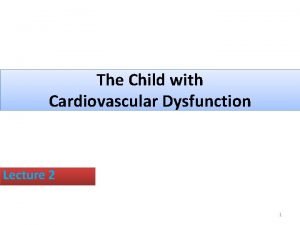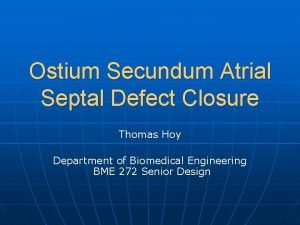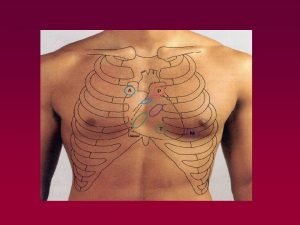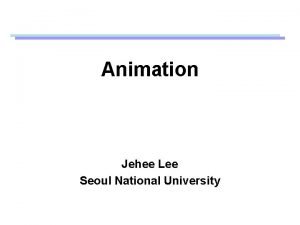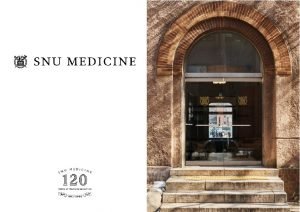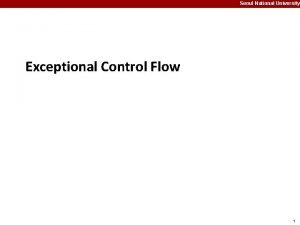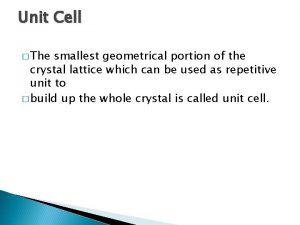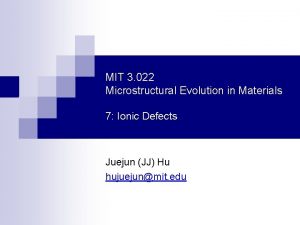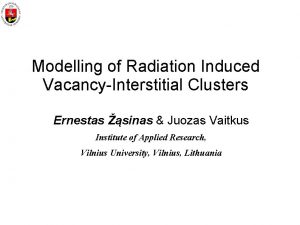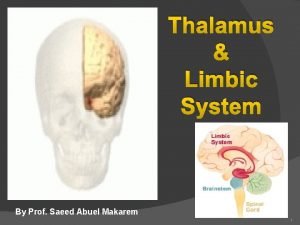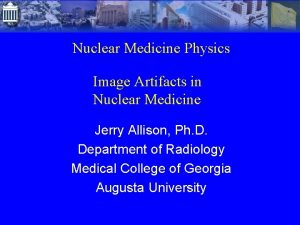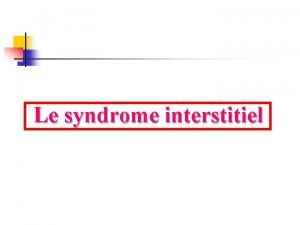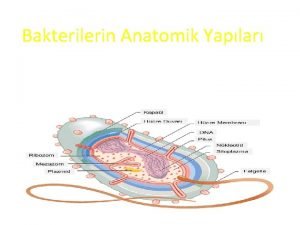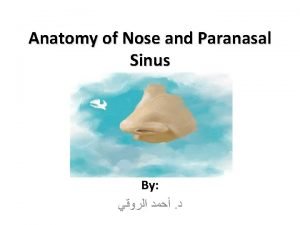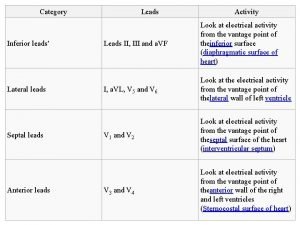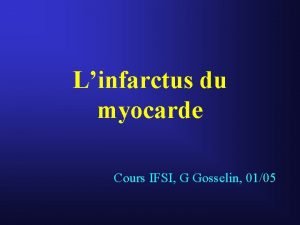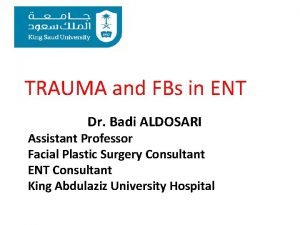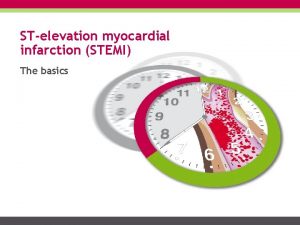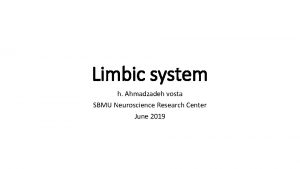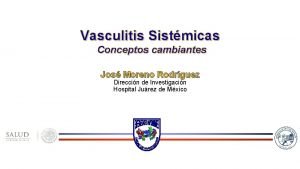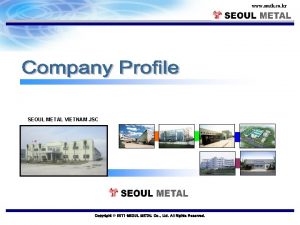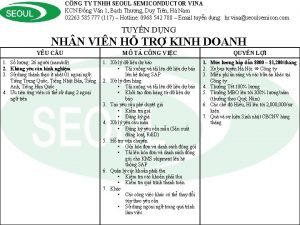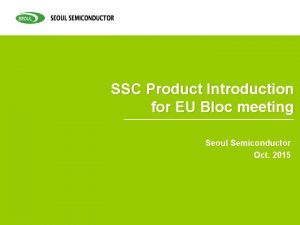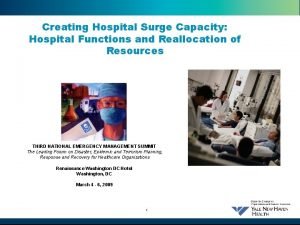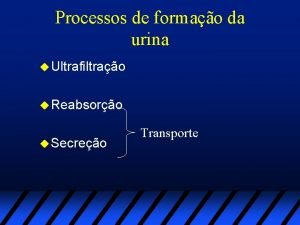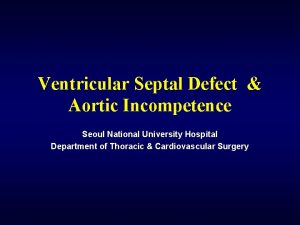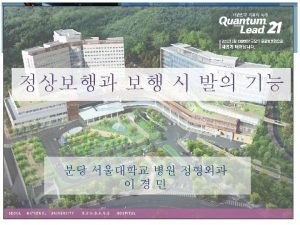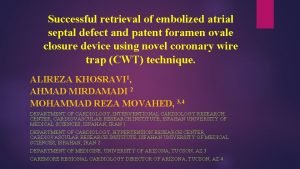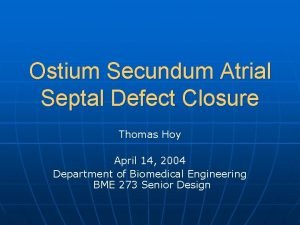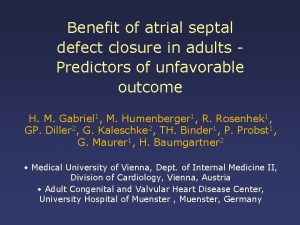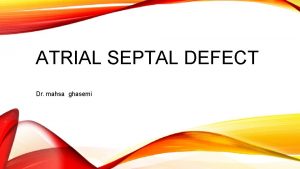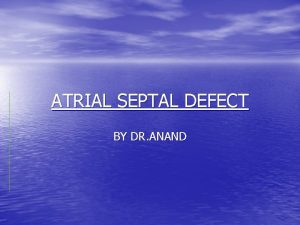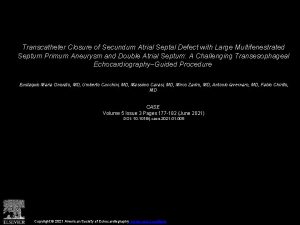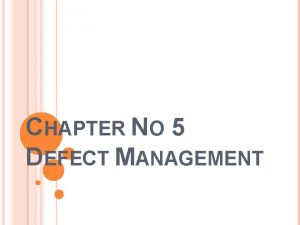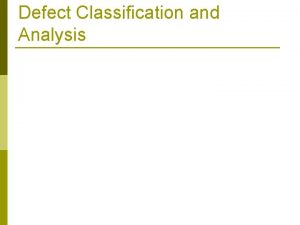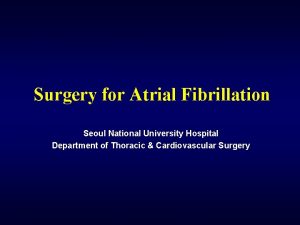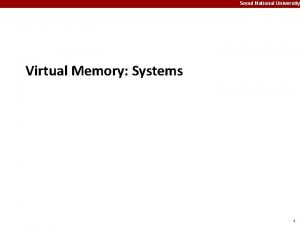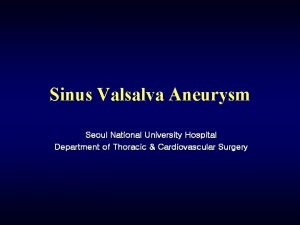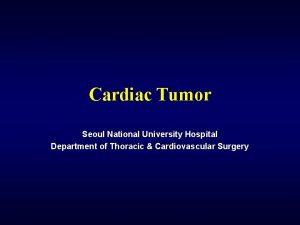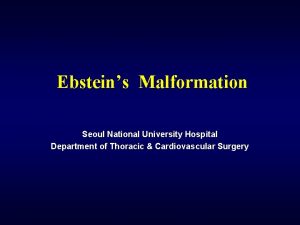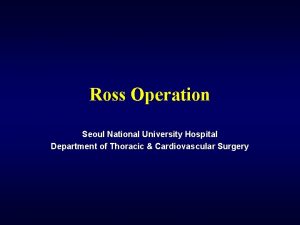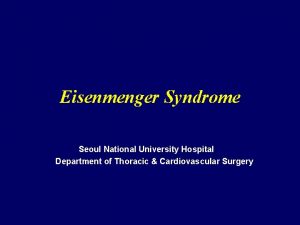Atrial Septal Defect Seoul National University Hospital Department






































- Slides: 38

Atrial Septal Defect Seoul National University Hospital Department of Thoracic & Cardiovascular Surgery

Atrial Septal Defect 1. Definition A hole of variable size in the atrial septum. A patent foramen ovale functionally closed is excluded. Partial anomalous pulmonary venous connections may occur as isolated lesion or in combination with ASD. 2. History Roesler : ASD diagnosed during life in 1934. Bedford : Diagnosis of ASD clinically in 1941. Winslow : Description of PAPVC in 1739. Murray : External suture of ASD in 1948. Lewis & Taufic : 1 st open repair with inflow stasis and cooling in 1953. Gibbon : 1 st open heart surgery in 1953.

Composition of Atrial Septum 1. Thick superior portion derived from infolded atrial roof that forms the secondary atrial septum of the embryo, this terminates in the superior limbic bands. 2. Thin lower portion derived from the septum primum which extends superiorly and to the left of the limbus. The lower edge of the septum primum normally fuses with developing endocardial cushions.

Atrial Septal Defect ØPathophysiology • Atrial septal defects permit left-to-right shunting, increasing pulmonary blood flow. • Over time, the increased pulmonary overcirculation leads pulmonary vascular occlusive disease, pulmonary hypertension, right ventricular failure, and the atrial arrhythmias.

Anatomy of Right Atrium

ASD. Surgical Pathology

Atrial Septal Defect Ø Types l Fossa ovalis defect (ostium secundum defect) l Posterior defect l Ostium primum defect l Coronary sinus defect l Subcaval defect (sinus venosus defect , superior vena caval defect) l Confluent ASD

Types of Atrial Septal Defect

ASD. Gross Morphology

ASD. Secundum, Large

ASD. Secundum, Multiple

ASD. Secundum

ASD. Sinus Venosus Type

ASD. Sinus Venosus Type

ASD. Sinus Venosus Type

Pericardial Patch Closure ASD. Sinus Venosus Type

Types of PAPVC 1. Sinus venosus malformation (syndrome) 2. Right superior pulmonary vein to SVC without superior caval ASD 3. Rt. PVs to Rt. atrium with or without ASD 4. Rt. PVs to IVC (Scimitar syndrome) 5. Rare connections of Rt. PVs 6. Anomalous Lt. PV connections 7. Bilateral partial anomalous PV connection

Pathophysiology of PAPVC • One or more, but not all, all the pulmonary veins drain into the right atrium or its venous tributaries ; ASDs are commonly associated. • This anomaly results in a left-to-right shunt leading to pulmonary hypertension, pulmonary vascular disease, and congestive heart failure if left untreated. • It comprises less than 1% of congenital heart diseases.

Morphology of Atrial Septal Defect 1. Cardiac chamber. Enlarged thick right atrium. Increased diastolic RV. LV dynamic abnormality 2. Mitral valve. Mitral prolapse. Mitral incompetence. Cleft mitral leaflet 3. The lungs. Pulmonary vascular disease. Compress smaller airways 4. Cardiac conditions. All varieties of CHD coexist. Mitral valvar disease. Tricuspid incompetence 5. Other conditions. Marfan. Turner. Noonan. Holt-Oram syndrome. Rarely all these conditions

Clinical Features & Diagnosis 1. Prevalence. 10% of CHD. M : F = 1 : 2. Fossa ovalis defect is most common (80%) 2. Symptoms and signs. No symptoms & signs when Qp/Qs is less than 1. 5. Effort breathlessness and respiratory infections. Active parasternal systolic lift & fixed splitting of S 2 3. Chest radiography, electrocardiography 4. Two-dimensional echocardiography 5. Cardiac catheterization and cineangiography

Natural History of ASD 1. Survival 5 -15% die in 3 rd decade Premature death with CHF Rarely paradoxical emboli 2. Pulmonary hypertension 3. Functional status 1% with large ASD have symptoms during 1 year 4. Spontaneous closure Uncommon after 1 year 5. Changes in Qp/Qs with time 6. Rt & Lt ventricular function 7. AV valvar dysfunction 8. Supraventricular arrhythmia AF in adult Sinus node dysfunction 9. Systemic hypertension No definite causes, but increased incidence

Changes of Qp/Qs in ASD • Decreasing LV compliance may increase Qp/Qs in patients with ASD during 5 th – 6 th decades • Systemic arterial hypertension may accelerate this process and unmask an ASD • Most ASDs increase in size & shunt as time passes, as with tendency toward mitral valve prolapse • These increase in shunt with time do not occur when the shunt is from the PAPVC without ASD • Qp/Qs decreases when the pulmonary hypertension develops with decreased RV compliance with RVH

Ventricular Functions in ASD • Right ventricular volume overload and increased RV diastolic dimensions are characteristic, and the ventricular septum is displaced posteriorly and leftward • These features of RV are well tolerated much longer than volume-overloaded LV, volume-overloaded RV by acute tricuspid or pulmonary regurgitation • RV failure eventually occurs, however, with decreased RV ejection fraction and hypokinesia • Most adult patients with large ASD have normal LV systolic dimensions but subnormal diastolic dimensions • Some loss of LV functional reserve is present in most adult patients and in some children & preoperative LV abnormalities by the effects of volume-overloaded RV

Indications for Operation 1. Uncomplicated ASD or PAPVC, RV volume overload & Qp/Qs greater than 1. 5 in uncomplicated ASD 2. Scimitar syndrome with severe hypoplasia of Rt lung and Qp/Qs less than 2 is not an indication. 3. Isolated PAPVC without ASD, when Qp/Qs is less than 1. 8 is not an indication. 4. Optimal age is under 5 years of age and also can be considered to be 1 -2 years of age recently. 5. Pulmonary vascular disease of sufficient severity (8 -12 u) is not indicated.

Techniques of Operation 1. Repair of fossa ovalis type 2. Repair of posterior ASD 3. Repair of coronary sinus type 4. Repair of sinus venosus type 5. Repair of anomalous PV connections 6. Repair of mitral or tricuspid valve disease

Primary Closure of ASD

Patch Closure of Secundum ASD

Sinus Venosus Type of ASD

Sinus Venosus Type with PAPVC

Sinus Venosus Type with PAPVC Warden Operation

Warden Operation

Repair of PAPVR Connection Left Pulmonary Vein to Innominate Vein • Anastomosis of left pulmonary vein to left atrial appendage

Perforated Flap-valve Patch

Operation for Scimitar Syndrome • Direct anastomosis of Scimitar vein to LA

Features of Postoperative Care 1. Convalescence of most patients is uneventful. 2. Unusually high LA pressure in early after operation in older patients because of impaired ventricular function 3. Incidence of pulmonary & systemic embolization occur, anticoagulation for 8 -12 weeks in old patients 4. When mitral regurgitation has been underestimated preoperatively and there are signs of pulmonary venous hypertension, urgent evaluation & reoperation for valve is required

Special Situations & Controversies 1. Closure of ASD by percutaneous technique 2. Need for cold cardioplegic myocardial protection 3. Direct suture versus patch repair Patch closure of large defects to avoid excessive tension 4. Patch material in the atrial septum 5. Complications of sinus venosus syndrome Postoperative narrowing due to small size or patch Compromise of sinus node by suture retraction Development of junctional rhythm by junctional incision . V-Y atrioplasty. Warden operation

Choice of Intraatrial Patch ØAutologous pericardium • When a regurgitation jet may strike the patch • When pericardium forms part of the wall of an intracardiac conduit, the precise contour (position) of which is determined by pressure difference • When the patch is sewn to a very delicate area

Operative Results of ASD 1. Survival. Hospital mortality. Time-related survival 4. Functional status 5. Hemodynamic results 2. Modes of death 6. Ventricular function 3. Incremental risk factors 7. Arrhythmic events for death 1) Pulmonary vascular disease (contraindication more than 6~8 units) 2) Older age at operation 3) Anatomic type 8. Thromboembolism 9. Reinterventions
 Transpozitia de vase mari
Transpozitia de vase mari Nursing management of atrial septal defect
Nursing management of atrial septal defect Atrial septal defect
Atrial septal defect Crocodin
Crocodin Sejong university animation
Sejong university animation Seoul national university computer science
Seoul national university computer science Seoul national university medical school
Seoul national university medical school Exceptional control flow
Exceptional control flow Metal deficiency defect
Metal deficiency defect Schottky defect and frenkel defect
Schottky defect and frenkel defect Vacancy defect and interstitial defect
Vacancy defect and interstitial defect Seoul university acceptance rate
Seoul university acceptance rate Where is the limbic system located
Where is the limbic system located Septal penetration artifact
Septal penetration artifact Reticulation sous pleurales
Reticulation sous pleurales Which leads view the septal wall
Which leads view the septal wall Periplazmik aralık
Periplazmik aralık Superior nasal meatus
Superior nasal meatus Onda q ecg
Onda q ecg Lateral leads
Lateral leads Idm antéro septal
Idm antéro septal Csf halo sign
Csf halo sign Lead stemi
Lead stemi Papez circuit pathway
Papez circuit pathway Perforacion septal
Perforacion septal Seoul metal vietnam
Seoul metal vietnam The seoul accord agreement accredits
The seoul accord agreement accredits Seoul metro map
Seoul metro map Công ty seoul semiconductor vina
Công ty seoul semiconductor vina Neis korea
Neis korea Seoul semiconductor vina
Seoul semiconductor vina Seoul
Seoul Sunsangnim
Sunsangnim Seoul idrc
Seoul idrc Pharmacist required for 250 beds
Pharmacist required for 250 beds Functions of laundry department in hospital
Functions of laundry department in hospital Hospital organizational structure
Hospital organizational structure Flagler hospital billing department
Flagler hospital billing department Peptídeo natriurético atrial
Peptídeo natriurético atrial

